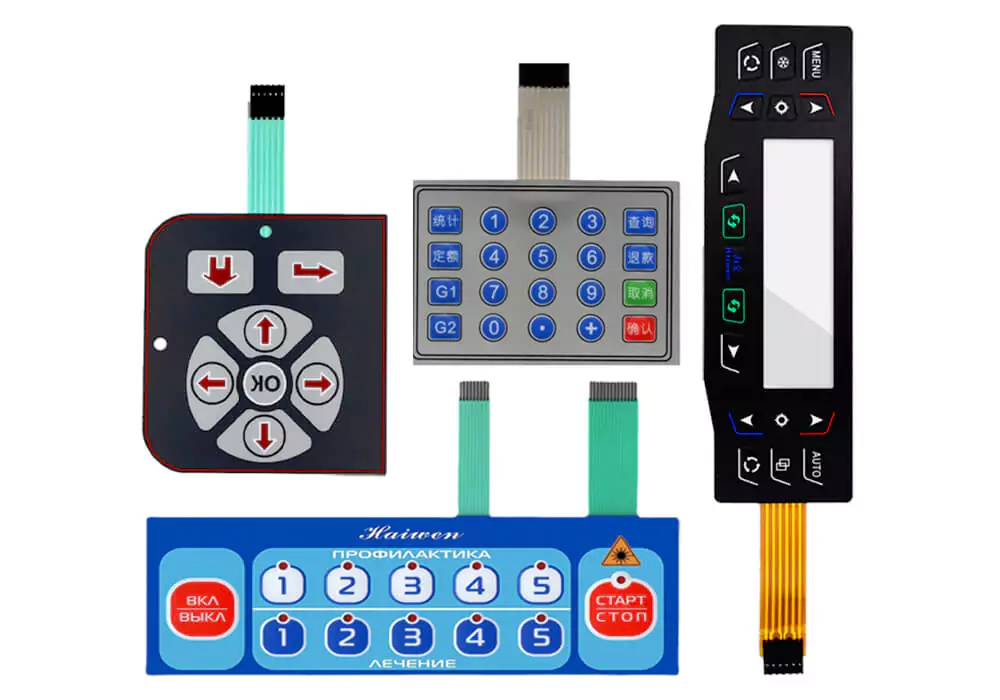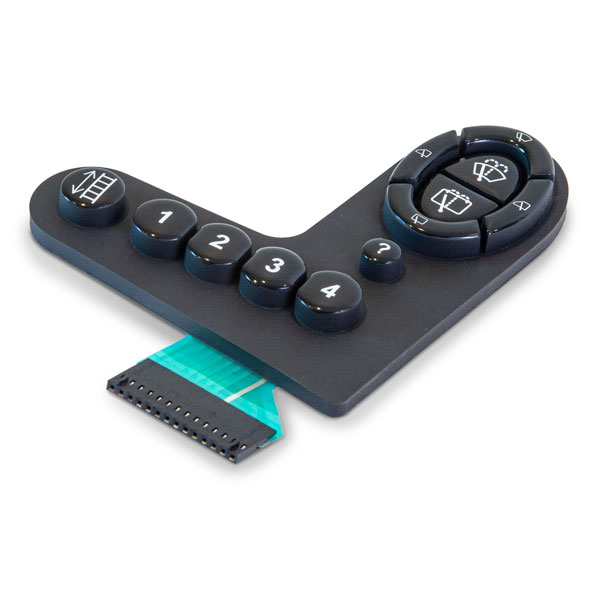Understanding the Relevance of Membrane Switch Over in Modern Electronic Devices
Membrane switches are indispensable parts in contemporary digital gadgets. They use a blend of capability and style that boosts individual communication. Their durable and lightweight nature makes them appropriate for numerous applications. As sectors develop, the demand for personalization and advanced functions expands. Recognizing how membrane switches add to advancement discloses their value fit the future of electronics. What exists in advance for this modern technology?
The Essentials of Membrane Layer Change Technology
Although commonly forgotten, membrane button technology plays a vital function in the modern electronic devices landscape - membrane switch. These devices, composed of numerous layers, act as customer interfaces for numerous electronic products, varying from family home appliances to medical devices. A typical membrane switch contains a graphic overlay, a spacer layer, and a circuit layer, which are thoroughly set up to create a practical interface.When pressure is applied to the overlay, the circuit layer is finished, allowing signals to be transferred to the device. This technology is known for its flexibility, enabling personalization in shape, layout, and functionality to fulfill certain user requirements. Furthermore, membrane buttons are light-weight and thin, making them suitable for applications where room is a premium. Their toughness and resistance to environmental elements even more enhance their allure, guaranteeing they can stand up to harsh problems while preserving performance. Generally, membrane switch innovation is important to creating user-friendly and effective digital gadgets

Trick Benefits of Membrane Layer Switches
Membrane switches offer a number of vital benefits that make them a favored option in numerous electronic applications. Their style allows for a compact form element, enabling producers to develop streamlined and light-weight gadgets. Furthermore, membrane buttons are immune to dirt, dampness, and chemicals, which improves their durability and longevity in requiring settings. The responsive feedback provided by these switches can boost user experience, making them very easy and instinctive to operate.Furthermore, membrane layer switches can be customized with diverse graphics and colors, permitting one-of-a-kind branding opportunities. The manufacturing process is normally affordable, especially for high-volume manufacturing, as it lowers assembly time and simplifies layout. Membrane layer changes need very little maintenance, contributing to lower overall functional costs. These advantages emphasize their growing appeal in modern electronic devices, where reliability and straightforward user interfaces are crucial.

Applications Throughout Various Industries
The versatility of membrane layer switches allows their widespread adoption across different sectors. In the clinical field, they are generally utilized in analysis devices and person surveillance systems, offering a resilient interface resistant to pollutants. The automobile market uses membrane buttons for dashboard controls, enhancing individual experience with smooth designs that hold up against extreme conditions. In customer electronic devices, they offer as control panels for gadgets such as microwaves and coffee makers, providing a straightforward interface that is easy to tidy. The aerospace market uses membrane layer buttons in cabin controls, where reliability and area effectiveness are vital. Additionally, the commercial sector leverages these buttons in equipment and control systems to ensure durable procedure popular settings. This wide series of applications highlights the adaptability of membrane buttons, making them indispensable elements in great site enhancing capability and customer communication across diverse technological landscapes.
Modification and Design Versatility

Future Patterns in Membrane Layer Switch Growth
Arising patterns in membrane layer switch growth indicate an expanding focus on enhanced capability and combination with clever technologies. As customer demand for a lot more sophisticated electronic tools boosts, makers are concentrating on producing membrane switches that not only serve fundamental operational functions however also include attributes like touch sensitivity, backlighting, and haptic feedback.Furthermore, look at here advancements in materials are anticipated to enhance sturdiness and ecological resistance, making membrane switches ideal for diverse applications in sectors such as healthcare, automobile, and consumer electronics. The combination of capacitive touch innovation is likely to come to be much more common, enabling for sleeker styles and improved user interfaces. membrane switch.Additionally, the rise of the Internet of Things (IoT) is triggering the advancement of membrane changes that can connect wirelessly with various other gadgets, boosting interconnectivity. Overall, the future of membrane layer button modern technology appears appealing, driven by development and the pursuit of user-friendly solutions
Frequently Asked Inquiries
Just How Do Membrane Layer Switches Contrast to Standard Mechanical Switches?
Membrane layer switches, being more space-efficient and offering a streamlined design, comparison with standard mechanical switches that offer tactile responses. The previous often feature customizable graphics, while the last typically guarantee durability and integrity in different applications.
What Products Are Commonly Made Use Of in Membrane Change Production?
Membrane layer switches are commonly produced making use of materials such as polyester, polycarbonate, and published conductive inks. These products supply responsiveness, versatility, and durability, making them appropriate for numerous applications in electronic devices and individual interfaces.
Can Membrane Layer Switches Be Repaired or Reused?
Membrane buttons can frequently be repaired, specifically if small issues emerge, such as sticky failing or surface damages. Nonetheless, full reuse is typically restricted due to wear and possible deterioration of products with time.
How Do Ecological Aspects Influence Membrane Layer Switch Efficiency?
Environmental elements, such as exposure, temperature level, and humidity to chemicals, substantially influence membrane layer switch efficiency. Extreme problems can cause deterioration, influencing responsiveness and durability, ultimately jeopardizing the functionality of the gadget in different applications.
What Is the Regular Life Expectancy of a Membrane Layer Change?
The regular life expectancy of a membrane layer webpage button normally varies from 1 to 5 million actuations, depending on aspects such as use frequency, ecological conditions, and the products made use of in manufacturing, influencing resilience and performance long life. A common membrane layer button consists of a graphic overlay, a spacer layer, and a circuit layer, which are diligently assembled to develop a functional interface - membrane switch.When pressure is applied to the overlay, the circuit layer is completed, permitting signals to be transmitted to the gadget. The responsive comments supplied by these buttons can enhance user experience, making them instinctive and easy to operate.Furthermore, membrane layer buttons can be personalized with varied graphics and shades, permitting for unique branding chances. As consumer demand for a lot more innovative digital tools rises, suppliers are focusing on producing membrane changes that not only offer fundamental operational duties however likewise include features like touch sensitivity, backlighting, and haptic feedback.Furthermore, advancements in materials are anticipated to boost resilience and environmental resistance, making membrane switches over ideal for diverse applications in industries such as healthcare, automobile, and consumer electronic devices. The combination of capacitive touch modern technology is most likely to end up being more widespread, allowing for sleeker layouts and enhanced individual interfaces.Additionally, the increase of the Web of Things (IoT) is motivating the development of membrane switches over that can interact wirelessly with other gadgets, enhancing interconnectivity. Membrane layer switches, being much more space-efficient and using a sleek layout, contrast with standard mechanical buttons that supply tactile feedback